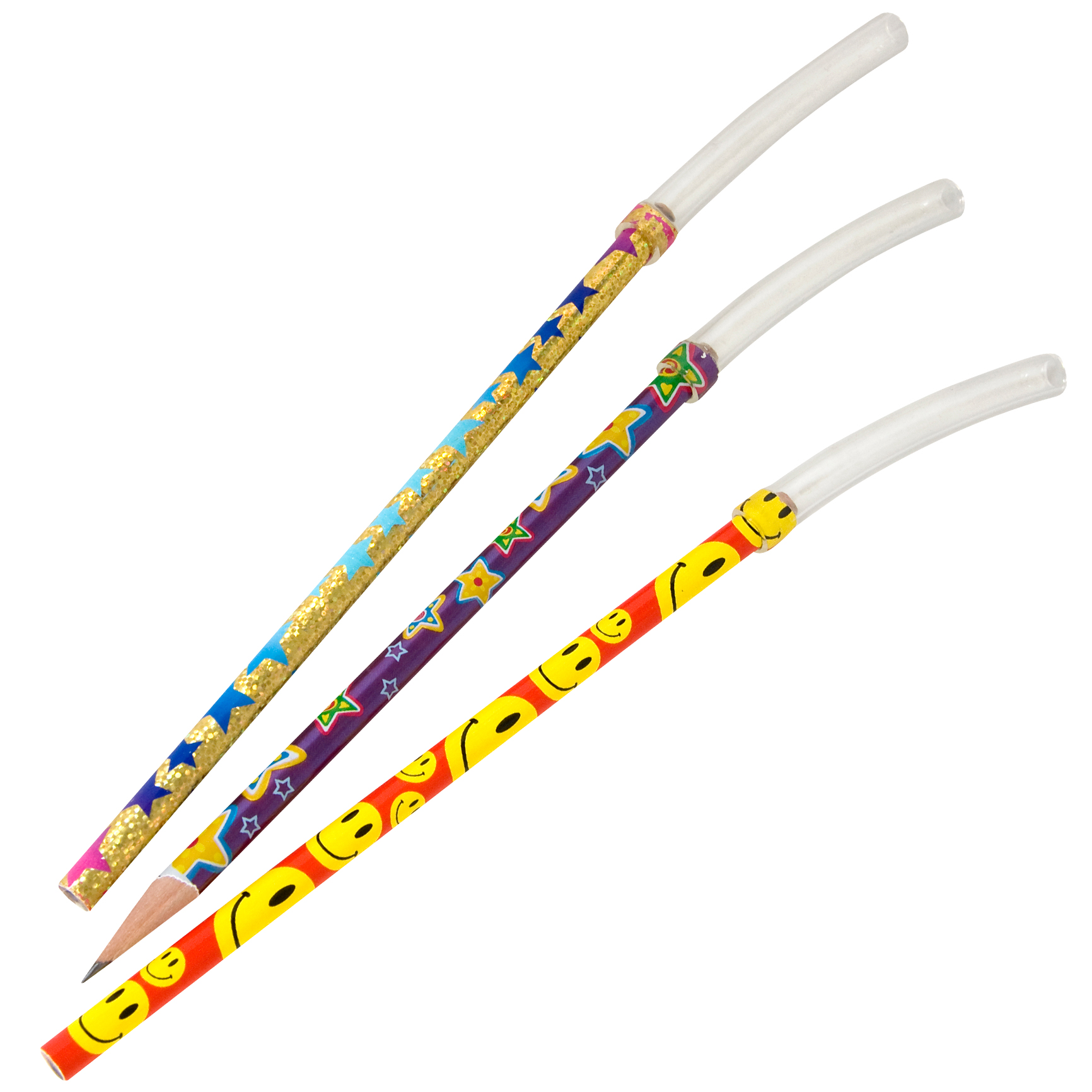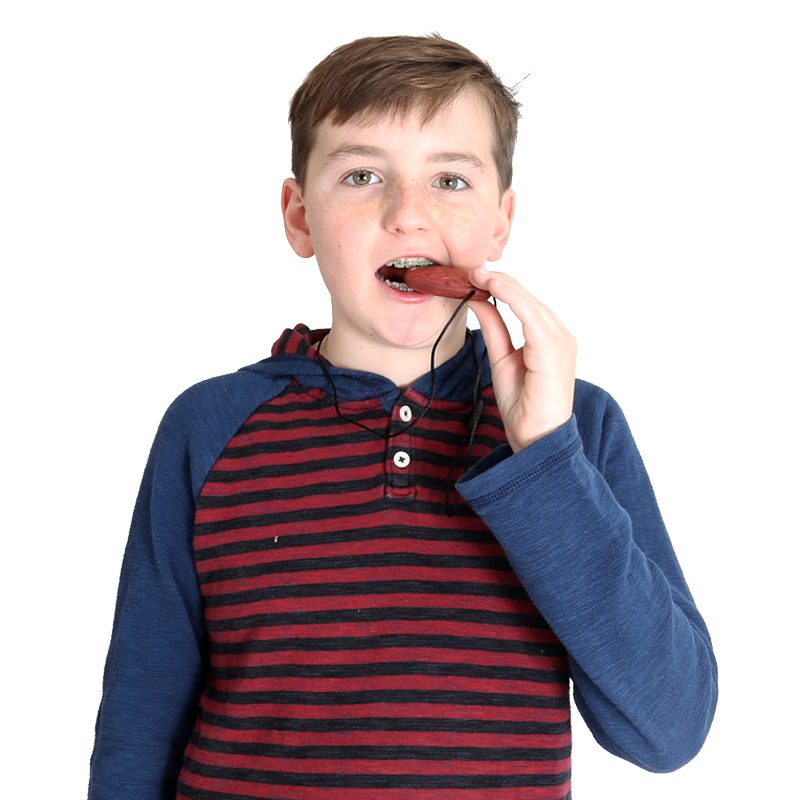Chew on this! A sensory chew or chewelry is a playful tool for sensory integration, oral motor training or fidgeting. Many kids and adults need to chew to help regulate the nervous system, cope with anxiety, or manage stress. But chewing on sleeves, fingernails, or pencils is rarely a good solution. Instead a sensory chew toy provides a safe alternative for sensory processing and proprioceptive input.
Choose a Sensory Chew for your Needs
Fortunately sensory chews come in a variety of textures, shapes, materials, and densities. With so many choices, choosing a sensory chew can be overwhelming at first. Start by understanding your chewer. Is he aggressive, a biter or sensory seeking? You may want a super tough sensory chew with a highly tactile surface. For an under responsive chewer with low muscle tone, a soft sensory chew that bends easily is non-offensive. A non-verbal child with limited oral motor skills may thrive with a vibrating chewy. Many chewers like the accessibility of a sensory chew necklace that is worn around the neck. Now let's take at look at how to use a sensory chew.


Chew to Decrease Anxiety
Chewing is one of our favorite filters for reducing anxiety and reducing sensory overload. It is a perfect tool for sensory seekers but also sensory over responsive individuals and those who are under-responsive. The jaw can provide over 300 pounds of pressure, which is like a sensory-motor workout to the mouth, helping to release endorphins and encourage a more balanced sensory state.Fidget to Calm and Relax
A sensory chew or chewy fidget works great in the hands too. Many chewies have tactile or soft surfaces and provide a great outlet for tactile exploration, fidgeting, and fine motor work. Most fidgets can be used bilaterally as well and may encourage eye-hand coordination as well as crossing midline.

Chew to Improve Focus with Sensory Chew
Can chewing help you focus? Yes, chewing filters sensory input, and can help to organize and synthesize that information as well. As the jaw and mouth move, Golgi tendon organs are stimulated and awareness increases. So chew to learn and make it part of your learning program.























Comments